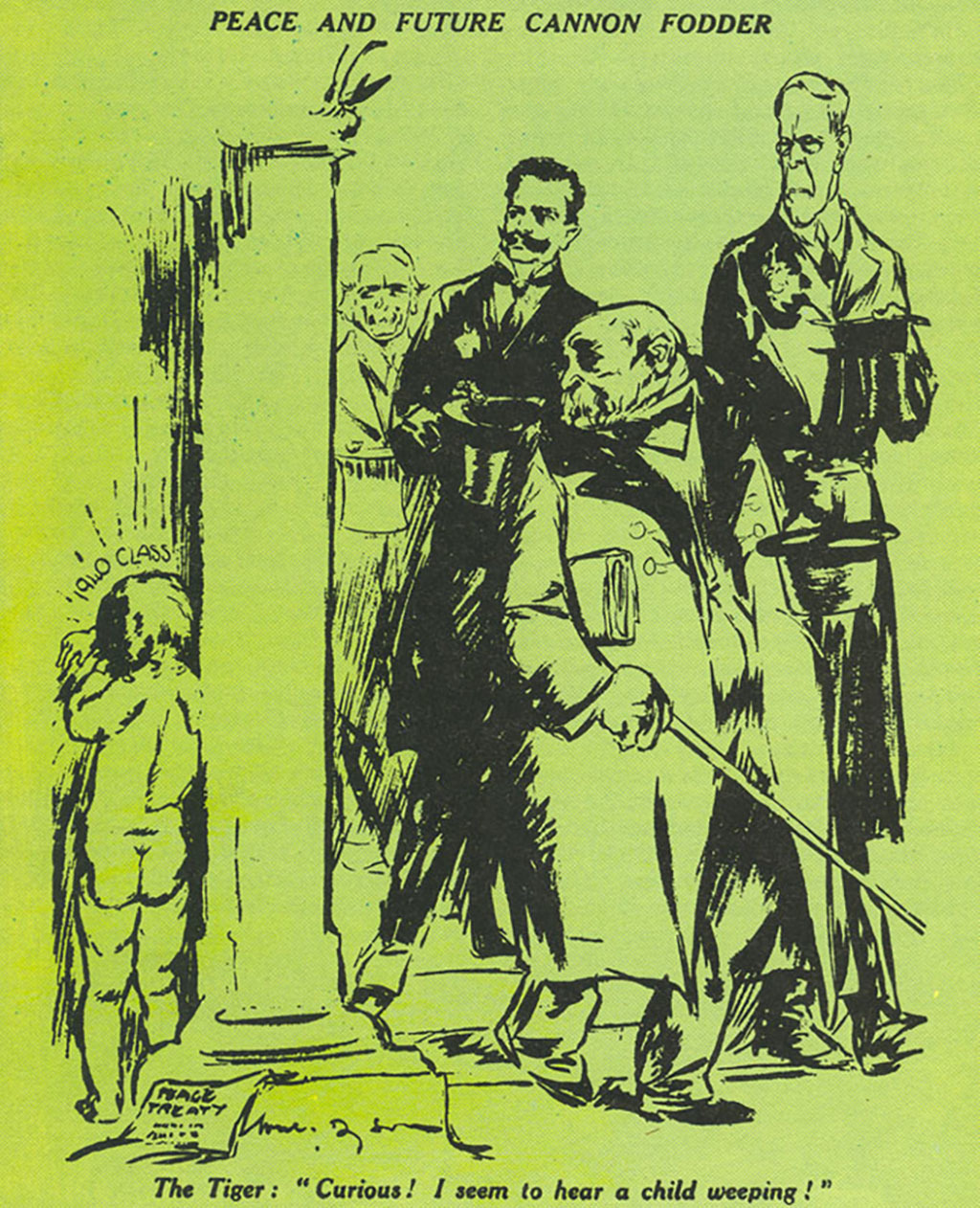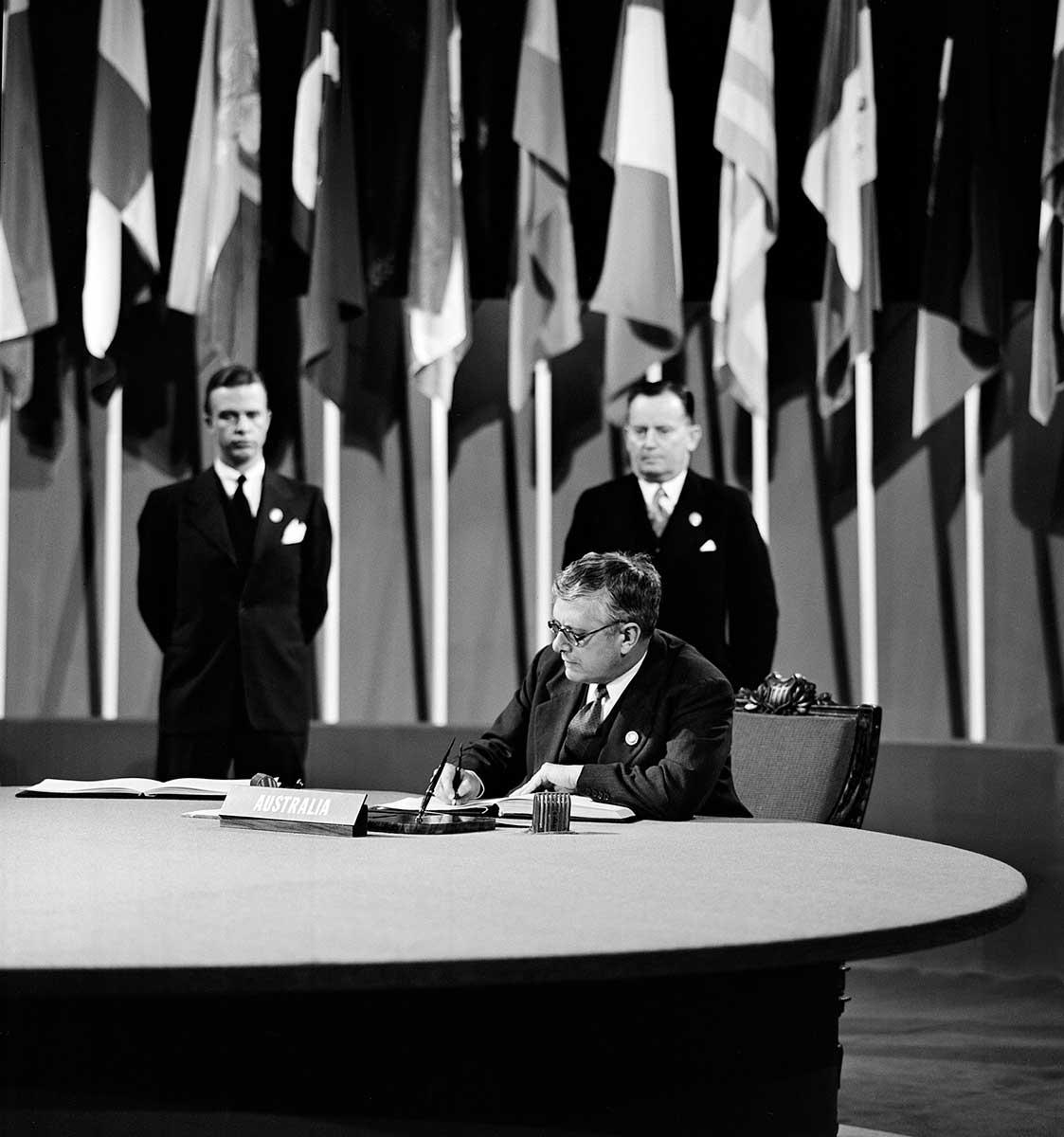Learning module:
Second World War Defining Moments, 1939–1945
Investigation 4: Australia and the world
4.2 1919 ‘I speak for sixty thousand dead’: The Treaty of Versailles

Historians generally agree that the origins of the Second World War can be traced back in part to the harsh treaty imposed on the Germans by the victorious Allies in 1919.
Britain had wanted to represent all the Dominions in negotiating and signing the treaty, but Australian Prime Minister Hughes insisted on having separate representation for Australia. Only in this way, he argued, could Australia’s particular interests be protected.
1. What was the aim of the Treaty of Versailles?
2. What were Hughes’ main demands for Australia?
3. Why did Hughes want control of German New Guinea?
4. Why do you think Japan wanted a ‘racial equality’ clause in the Treaty?
5. Why did Hughes oppose a ‘racial equality’ clause?
6. How did this put him in opposition to Britain?
7. Why did Hughes want reparations?
8. How did Hughes see the Treaty as a victory for Australia?
9. Now complete this sentence:
10. Here is a cartoon about the treaty by Australian cartoonist Will Dyson. Look at it closely and complete the table below.

| a) Who is in the cartoon? | |
| b) What are the figures doing/saying? | |
| c) How are they drawn (e.g. sympathetically, critically)? | |
| d) What is the attitude or tone of the cartoon? | |
| e) What is the message or meaning of this cartoon? | |
| f) Does it accurately reflect the historical reality of the time? | |
| g) Do you think it would have been an effective cartoon at the time? | |
| h) Is it is a useful primary source to help you understand the period? Why? | |
| i) What does it tell you about attitudes to the Treaty of Versailles? |
11. Do you think the Treaty of Versailles contributed to the outbreak of the Second World War? Explain your answer.











